Cover
Title Page
Copyright Page
Contents
Figures
Listings
Preface
Acknowledgments
About the Author
Chapter 1: High-LevelStrategies
Item 1: Handle All Problems through an Issue-Tracking System
Item 2: Use Focused Queries to Search the Web for Insights into Your Problem
Item 3: Confirm That Preconditions and Postconditions Are Satisfied
Item 4: Drill Up from the Problem to the Bug or Down from the Program’s Start to the Bug
Item 5: Find the Difference between a Known Good System and a Failing One
Item 6: Use the Software’s Debugging Facilities
Item 7: Diversify Your Build and Execution Environment
Item 8: Focus Your Work on the Most Important Problems
Chapter 2: General-Purpose Methods and Practices
Item 9: Set Yourself Up for Debugging Success
Item 10: Enable the Efficient Reproduction of the Problem
Item 11: Minimize the Turnaround Time from Your Changes to Their Result
Item 12: Automate Complex Testing Scenarios
Item 13: Enable a Comprehensive Overview of Your Debugging Data
Item 14: Consider Updating Your Software
Item 15: Consult Third-Party Source Code for Insights on Its Use
Item 16: Use Specialized Monitoring and Test Equipment
Item 17: Increase the Prominence of a Failure’s Effects
Item 18: Enable the Debugging of Unwieldy Systems from Your Desk
Item 19: Automate Debugging Tasks
Item 20: Houseclean Before and After Debugging
Item 21: Fix All Instances of a Problem Class
Chapter 3: General-Purpose Tools and Techniques
Item 22: Analyze Debug Data with Unix Command-Line Tools
Item 23: Utilize Command-Line Tool Options and Idioms
Item 24: Explore Debug Data with Your Editor
Item 25: Optimize Your Work Environment
Item 26: Hunt the Causes and History of Bugs with the Revision Control System
Item 27: Use Monitoring Tools on Systems Composed of Independent Processes
Chapter 4: Debugger Techniques
Item 28: Use Code Compiled for Symbolic Debugging
Item 29: Step through the Code
Item 30: Use Code and Data Breakpoints
Item 31: Familiarize Yourself with Reverse Debugging
Item 32: Navigate along the Calls between Routines
Item 33: Look for Errors by Examining the Values of Variables and Expressions
Item 34: Know How to Attach a Debugger to a Running Process
Item 35: Know How to Work with Core Dumps
Item 36: Tune Your Debugging Tools
Item 37: Know How to View Assembly Code and Raw Memory
Chapter 5: Programming Techniques
Item 38: Review and Manually Execute Suspect Code
Item 39: Go Over Your Code and Reasoning with a Colleague
Item 40: Add Debugging Functionality
Item 41: Add Logging Statements
Item 42: Use Unit Tests
Item 43: Use Assertions
Item 44: Verify Your Reasoning by Perturbing the Debugged Program
Item 45: Minimize the Differences between a Working Example and the Failing Code
Item 46: Simplify the Suspect Code
Item 47: Consider Rewriting the Suspect Code in Another Language
Item 48: Improve the Suspect Code’s Readability and Structure
Item 49: Fix the Bug’s Cause, Rather Than Its Symptom
Chapter 6: Compile-Time Techniques
Item 50: Examine Generated Code
Item 51: Use Static Program Analysis
Item 52: Configure Deterministic Builds and Executions
Item 53: Configure the Use of Debugging Libraries and Checks
Chapter 7: Runtime Techniques
Item 54: Find the Fault by Constructing a Test Case
Item 55: Fail Fast
Item 56: Examine Application Log Files
Item 57: Profile the Operation of Systems and Processes
Item 58: Trace the Code’s Execution
Item 59: Use Dynamic Program Analysis Tools
Chapter 8: Debugging Multi-threaded Code
Item 60: Analyze Deadlocks with Postmortem Debugging
Item 61: Capture and Replicate
Item 62: Uncover Deadlocks and Race Conditions with Specialized Tools
Item 63: Isolate and Remove Nondeterminism
Item 64: Investigate Scalability Issues by Looking at Contention
Item 65: Locate False Sharing by Using Performance Counters
Item 66: Consider Rewriting the Code Using Higher-Level Abstractions
Web Resources
Index
A
B
C
D
E
F
G
H
I
J
K
L
M
N
O
P
Q
R
S
T
U
V
W
X
Y
Z

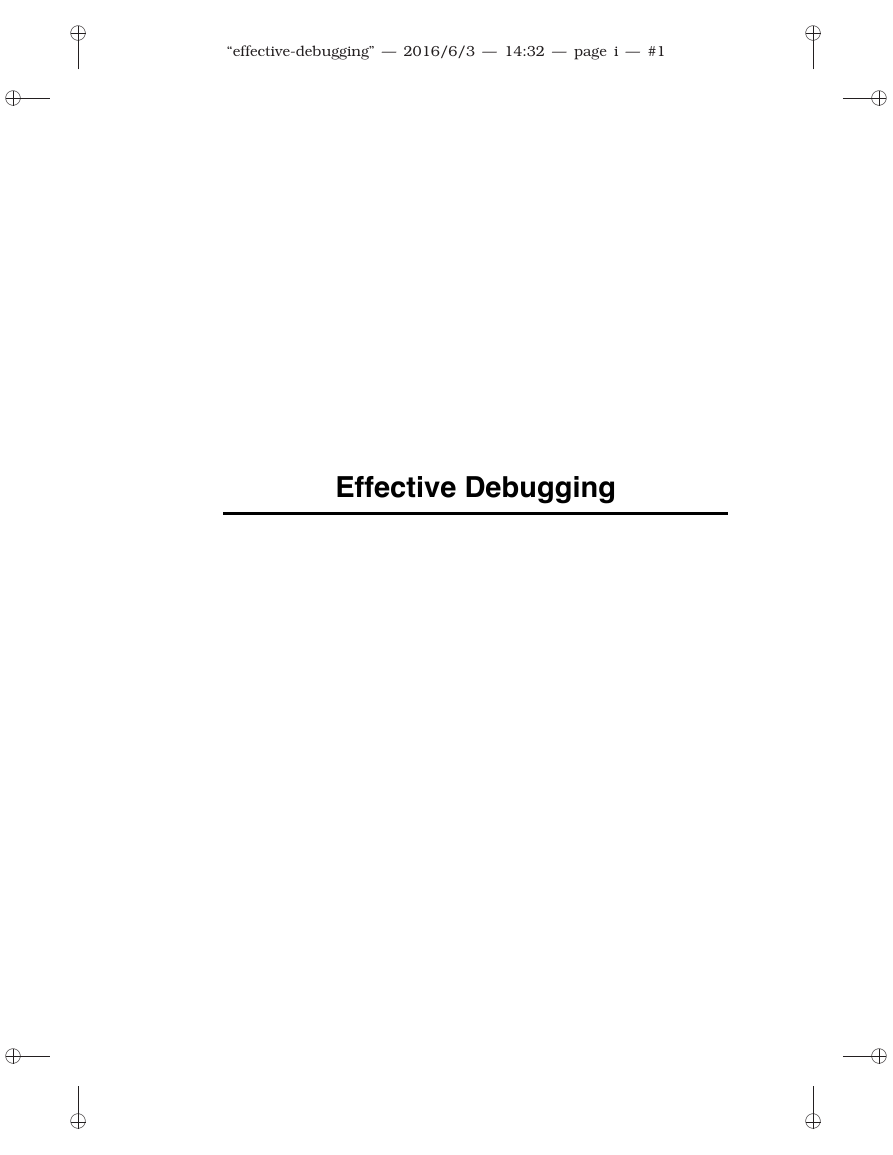
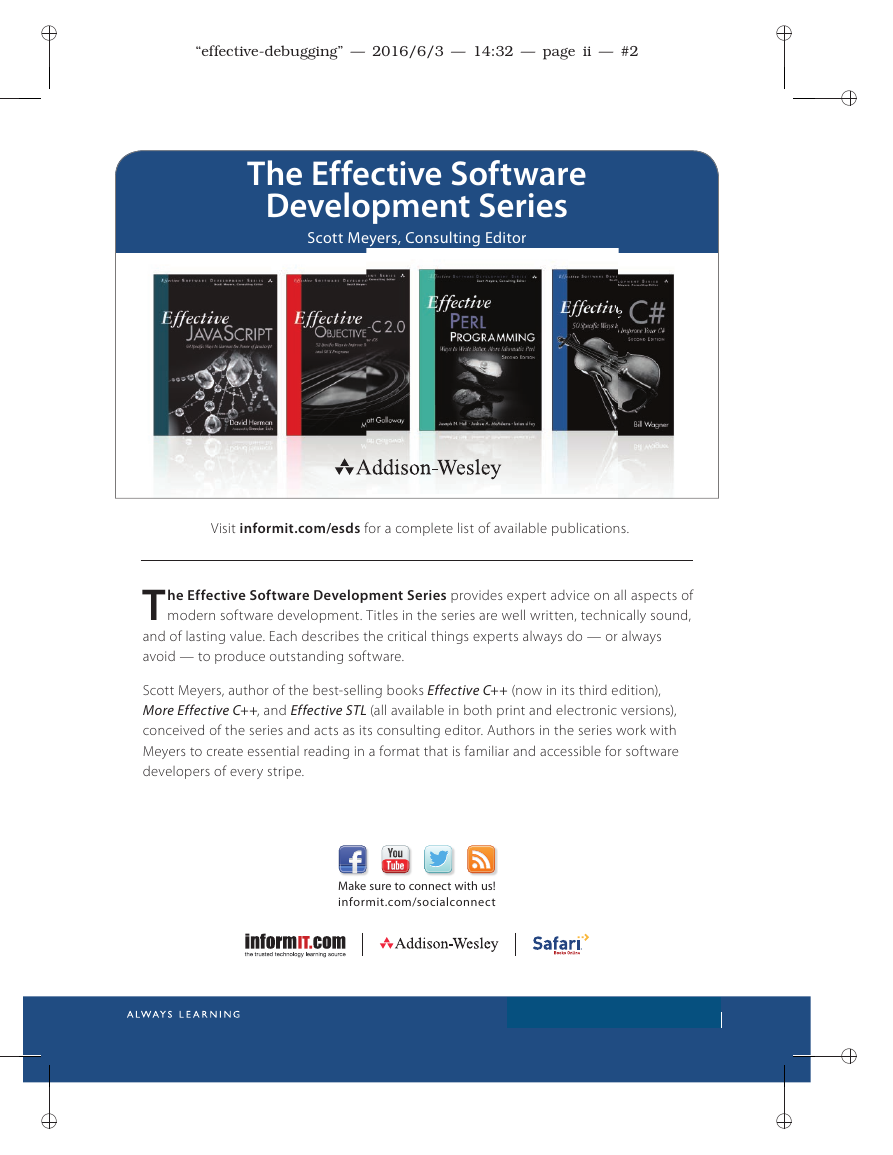
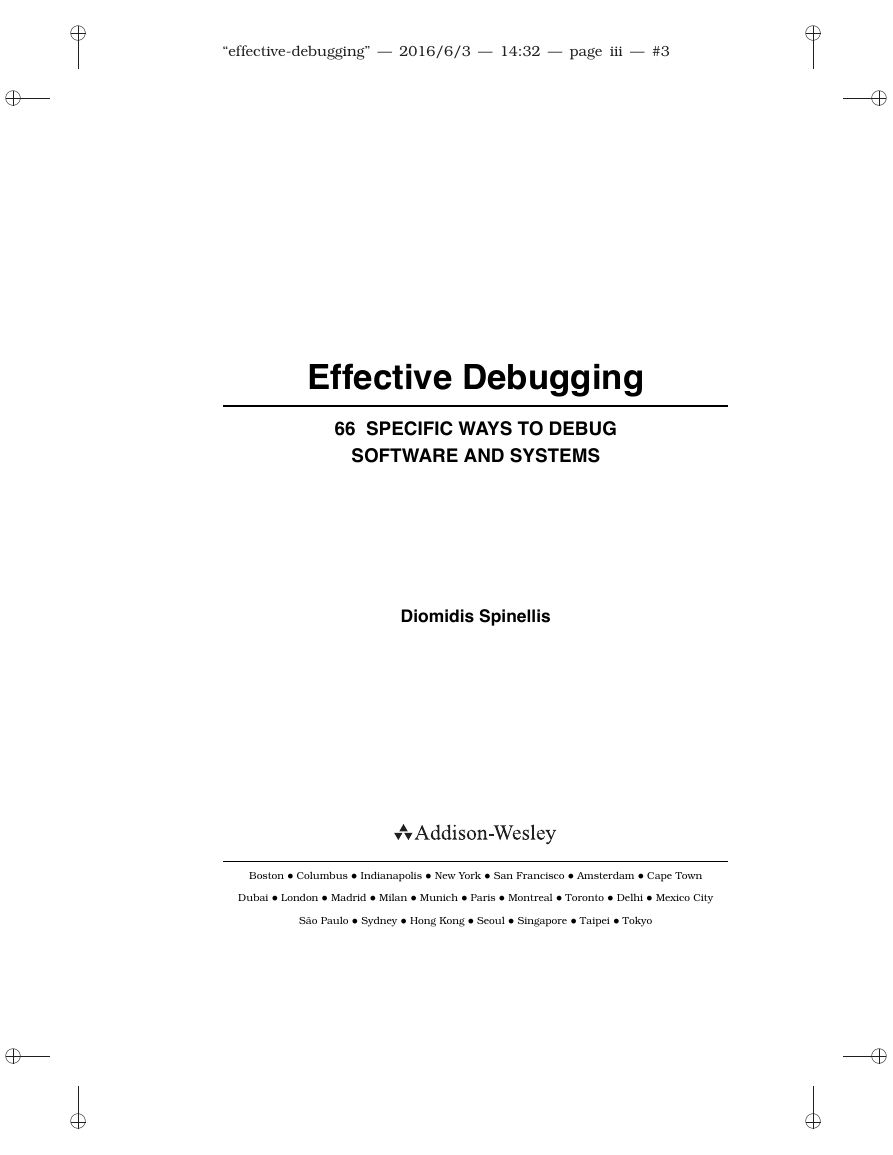
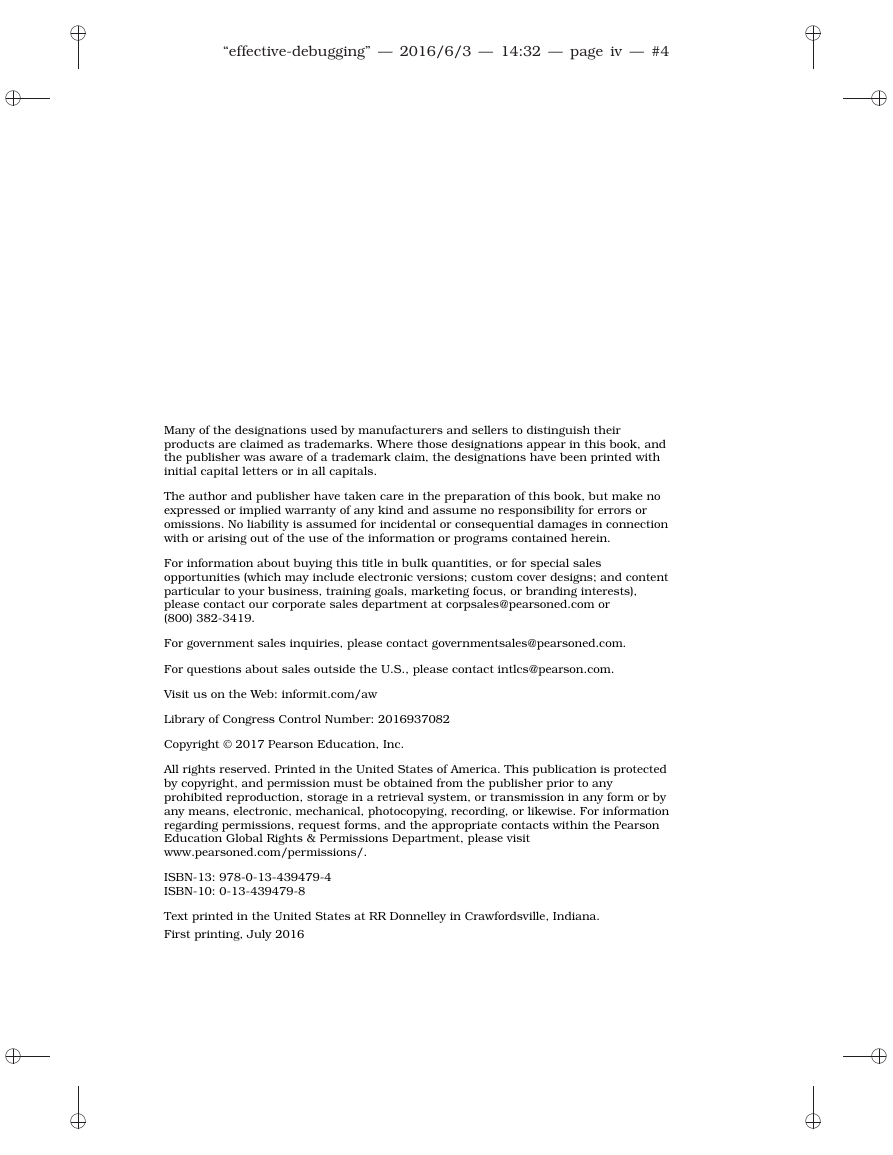


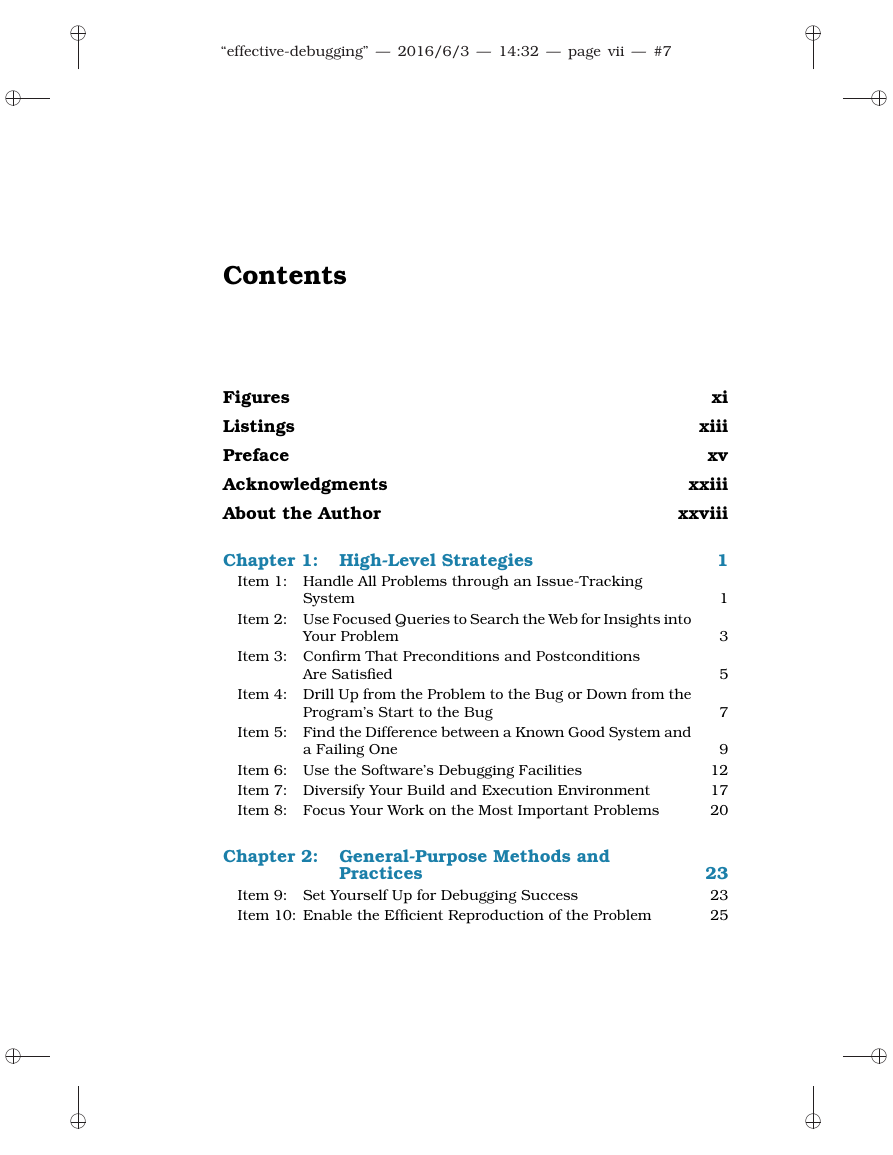








 2023年江西萍乡中考道德与法治真题及答案.doc
2023年江西萍乡中考道德与法治真题及答案.doc 2012年重庆南川中考生物真题及答案.doc
2012年重庆南川中考生物真题及答案.doc 2013年江西师范大学地理学综合及文艺理论基础考研真题.doc
2013年江西师范大学地理学综合及文艺理论基础考研真题.doc 2020年四川甘孜小升初语文真题及答案I卷.doc
2020年四川甘孜小升初语文真题及答案I卷.doc 2020年注册岩土工程师专业基础考试真题及答案.doc
2020年注册岩土工程师专业基础考试真题及答案.doc 2023-2024学年福建省厦门市九年级上学期数学月考试题及答案.doc
2023-2024学年福建省厦门市九年级上学期数学月考试题及答案.doc 2021-2022学年辽宁省沈阳市大东区九年级上学期语文期末试题及答案.doc
2021-2022学年辽宁省沈阳市大东区九年级上学期语文期末试题及答案.doc 2022-2023学年北京东城区初三第一学期物理期末试卷及答案.doc
2022-2023学年北京东城区初三第一学期物理期末试卷及答案.doc 2018上半年江西教师资格初中地理学科知识与教学能力真题及答案.doc
2018上半年江西教师资格初中地理学科知识与教学能力真题及答案.doc 2012年河北国家公务员申论考试真题及答案-省级.doc
2012年河北国家公务员申论考试真题及答案-省级.doc 2020-2021学年江苏省扬州市江都区邵樊片九年级上学期数学第一次质量检测试题及答案.doc
2020-2021学年江苏省扬州市江都区邵樊片九年级上学期数学第一次质量检测试题及答案.doc 2022下半年黑龙江教师资格证中学综合素质真题及答案.doc
2022下半年黑龙江教师资格证中学综合素质真题及答案.doc